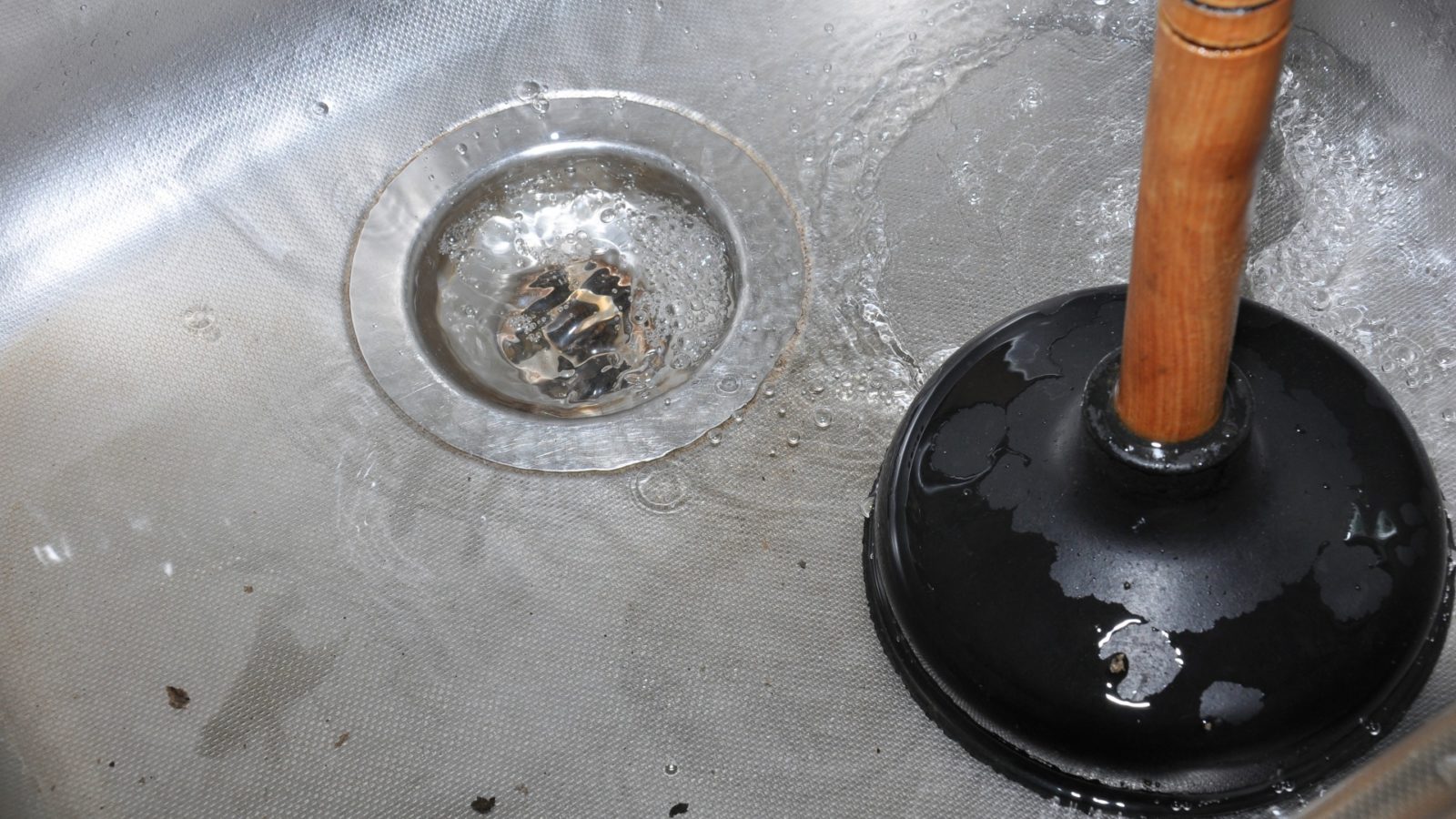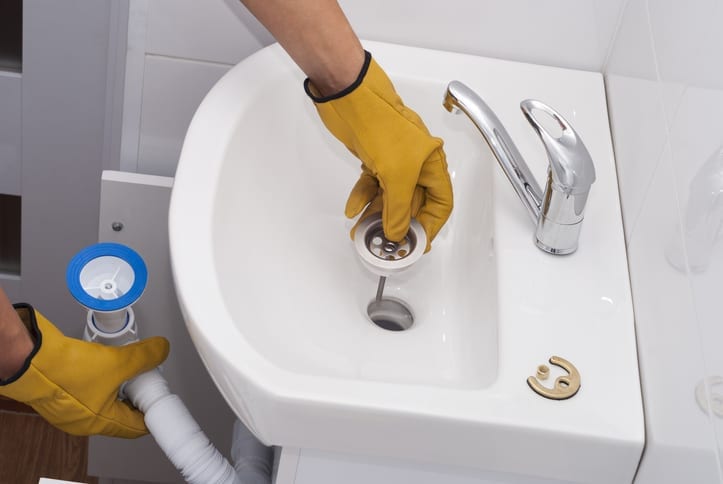Waterlogged And Wondering Why - 6 Causes For Your Kitchen Sink's Slow Drain
Waterlogged And Wondering Why - 6 Causes For Your Kitchen Sink's Slow Drain
Blog Article
We have found this article pertaining to Five Ways to Fix a Slow Sink Drain below on the web and reckoned it made sense to discuss it with you on this site.

It's not normal for your kitchen area sink to block multiple times in one month. If your sink obstructs two times a week, there's some trouble taking place.
An obstructed kitchen drainpipe does not just decrease your jobs, it degrades your whole plumbing system, gradually. Here are some typical behaviors that encourage sink obstructions, and also just how to avoid them.
You need correct waste disposal
Recycling waste is wonderful, yet do you pay attention to your organic waste also? Your cooking area should have two different waste boxes; one for recyclable plastics and also another for organic waste, which can end up being garden compost.
Having a marked trash bag will assist you and also your family avoid throwing pasta and also various other food remnants down the tubes. Commonly, these residues absorb wetness and also become clogs.
The mistake isn't from your kitchen sink whatsoever
Possibly the trouble isn't from your kitchen sink, but the entire water drainage system. In such a case, you may observe that sinks and drains get blocked every other week. You require a specialist plumbing service to fix this.
You're throwing coffee down the tubes
Made use of coffee premises as well as coffee beans still soak up a substantial amount of moisture. They may seem tiny sufficient to throw down the drain, however as time takes place they start to swell and also occupy even more space.
Your coffee grounds should go into organic waste disposal. Whatever portion gets away (maybe while you're depleting) will certainly be taken care of during your monthly cleanup.
You've been eating a lot of greasy foods
Your kitchen sink may still obtain obstructed despite having natural waste disposal. This may be because you have a diet abundant in oily foods like cheeseburgers.
This oil coats the insides of pipes, making them narrower and even more clog-prone.
Make use of a bettor
Your pipe wasn't dealt with appropriately in the first place
If you've been doing none of the above, yet still get regular obstructions in your kitchen area sink, you ought to call a plumber. There could be an issue with how your pipelines were set up.
While your plumber gets here, check for any leakages or abnormalities around your kitchen area pipes. Do not try to repair the pipes on your own. This may cause a crash or a kitchen area flood.
A person attempted to wash their hair in the kitchen sink
There's a correct time as well as place for every little thing. The kitchen area sink is just not the appropriate location to wash your hair. Cleaning your hair in the kitchen area sink will certainly make it block sooner or later unless you make use of a drain catcher.
While a drain catcher may catch a lot of the after effects, some strands might still get through. If you have thick hair, this might be enough to reduce your drain and also ultimately create a clog.
There's even more dirt than your pipes can take care of
If you get fruits straight from a farm, you may see more cooking area dirt than other people that shop from a shopping mall. You can easily repair this by cleaning the fruits as well as veggies effectively before bringing them right into your house.You need correct waste disposal
My Kitchen Sink Won’t Drain - What Should I Do?
If Your Sink Has a Garbage Disposal...
Turn on the disposal. If the disposal hums and doesn’t turn, then there’s clog in the disposal unit.
Go to your circuit breaker panel, and switch off the circuit breaker to your garbage disposal.
Back in your kitchen, double-check that your garbage disposal is off by trying to turn it on. The disposal should not move, and it should not make any noise.
Lie down underneath your sink so that you can see and access the bottom of the disposal unit. Look for a hole that looks like the head of a hex-head bolt in the center of the unit.
Place an Allen wrench inside this hole and turn it from side to side until you feel a decrease in resistance and are able to rotate the wrench completely in a single direction. This action rotates your disposal’s blade manually.
Put the wrench aside, and press the disposal unit’s reset button or switch.
Flip your garbage disposal’s circuit breaker switch back on, and turn on the unit to see if the obstruction has cleared. If it hasn’t, repeat the steps above until the obstruction is removed.
How to Unclog a Kitchen Sink Drain
If you have a double bowl sink, seal one side of the sink with an airtight lid or a second plunger before plunging the other side. Otherwise, you won’t be able to create adequate suction.
Place the cup of the plunger completely over the drain opening.
Turn on the faucet, and let the water run until it completely covers the cup of the plunger.
Start plunging by pushing the plunger down and pulling up again in order to build up suction. Make sure that the edges of the plunger stay in contact with your sink, or else you’ll lose the suction.
If you have trouble forming a seal between your sink and plunger, add petroleum jelly to the mouth of your plunger, and try again.
Plunge about five or six times before removing the plunger to see if water starts to drain properly. In some cases, you’ll even be able to feel the clog become dislodged while you plunge because suddenly there will be much less resistance. Repeat the plunging process until the clog clears.
Once water is draining properly again, run hot water down the drain for 5 minutes to help clear away grease, grime, and debris from the clog. https://www.plumbingjoint.com/blog/2019/august/my-kitchen-sink-won-t-drain-what-should-i-do-/

My Kitchen Sink Won’t Drain - What Should I Do?
If Your Sink Has a Garbage Disposal...
How to Unclog a Kitchen Sink Drain
https://www.plumbingjoint.com/blog/2019/august/my-kitchen-sink-won-t-drain-what-should-i-do-/
I'm certainly very drawn to Why Is My Sink Not Draining? and I hope you appreciated the new post. Enjoyed reading our article? Please share it. Help another person find it. We appreciate reading our article about Five Ways to Fix a Slow Sink Drain.
Visit Site
Report this page